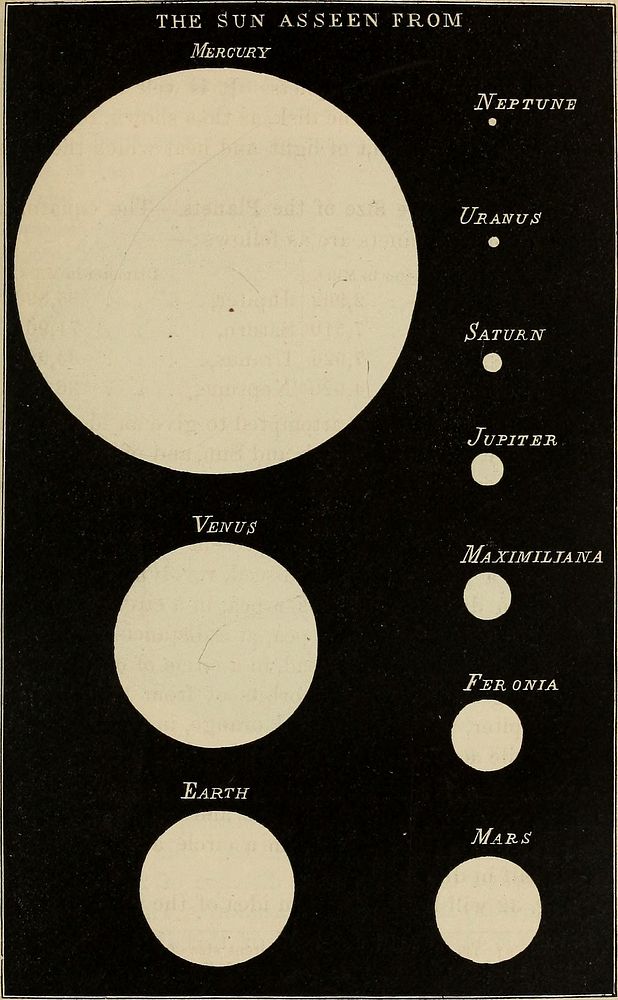https://creativecommons.org/publicdomain/zero/1.0/https://www.rawpixel.com/image/9976612

Identifier: elementsofastron00lock (find matches)Title: Elements of astronomy: accompanied with numerous illustrations, a colored representation of the solar, stellar, and nebular spectra, and celestial charts of the northern and the southern hemisphereYear: 1875 (1870s)Authors: Lockyer, Norman, Sir, 1836-1920Subjects: AstronomyPublisher: New York, D. Appleton and companyContributing Library: The Library of CongressDigitizing Sponsor: The Library of CongressView Book Page: Book ViewerAbout This Book: Catalog EntryView All Images: All Images From BookClick here to view book online to see this illustration in context in a browseable online version of this book.Text Appearing Before Image:at a distance of 430 feet;Mars, a rather large pins head, in a circle of 654 feet; theasteroids, grains of sand, in orbits of from 1,000 to 1,200feet; Jupiter, a moderate-sized orange, in a circle nearlyhalf a mile across; Saturn, a small orange, in a circle offour-fifths of a mile; Uranus, a full-sized cherry, or smallplum, in a circle more than a mile and a half across; andNeptune, a good-sized plum, in a circle about two milesand a half in diameter. Fig. 32 will help to give an idea of the relative size of Of Neptunes? 149. On what does the apparent size of an ohject depend? Towhich planet does the Sun look largest ? To which, smallest ? What does therelative size of the Suns disk also represent ? 150. Which planet has the great-est diameter? Which, the smallest? How does the Earths diameter comparewith that of Venus ? With that of Jupiter ? 151. Give Sir John Herschels illus-tration-of the comparative sizes and distances of the planets. What does Fig. 32 SIZE OF THE SUNS DISK. 11Text Appearing After Image:Fig. 31.—The Kelative Size of the Sun, as seen jfkom the Planets. 78 THE SOLAR SYSTEM. the Sun and planets. The black circle represents the diskof the Sun. The disks of the several planets are repre-sented by the white circles, on the same scale as that ofthe Sun, commencing with Mercury at the right of theupper line. KNote About ImagesPlease note that these images are extracted from scanned page images that may have been digitally enhanced for readability - coloration and appearance of these illustrations may not perfectly resemble the original work.
Original public domain image from Wikimedia Commons
Public DomainFree CC0 image for Personal and Business use